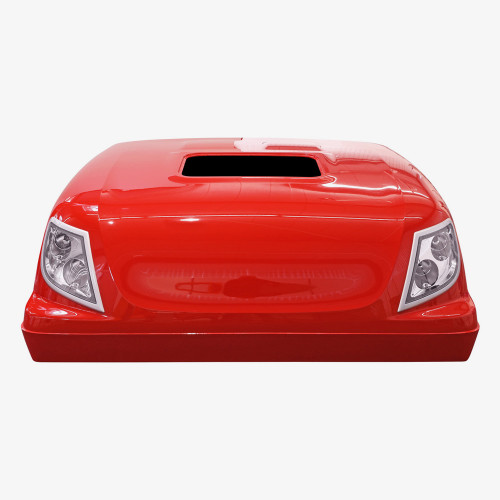
Truck roof cover made by wet molding process
The wet pressing process can be used to manufacture fiber-reinforced plastics such as glass fiber reinforced plastic (GRP) with a high fiber volume content and smooth surfaces on both sides.
In this process, a surface gelcoat is usually first injected into a two-part mold. Glass fiber mats are then inserted and synthetic resin is poured on with an injection lance. After closing the mold, the compound is pressed and then cured under heat.
We process both polyester resin and epoxy resin. Polyester resin is less expensive and is suitable for the requirements of most components, for example, self-supporting structures and cladding parts. If the mechanical requirements are higher, epoxy resin is used.
The tools used can be made of plastic or metal, for example aluminum, electroformed shells or steel are used. The plastic molds are manufactured in our in-house mold shop according to the C.F. Maier standard. This significantly increases process reliability. We are happy to carry out post-processing steps such as CNC machining or painting in-house.
The process is particularly suitable for the production of medium quantities. Just like the RTM process, this process produces components with backs defined by a stamp. Compared to the RTM process, the density is higher because the material is pressed harder. In the wet pressing process, it is not possible to produce cladding parts in Class A quality. We will be happy to advise you on the selection of the right manufacturing process for your requirements.